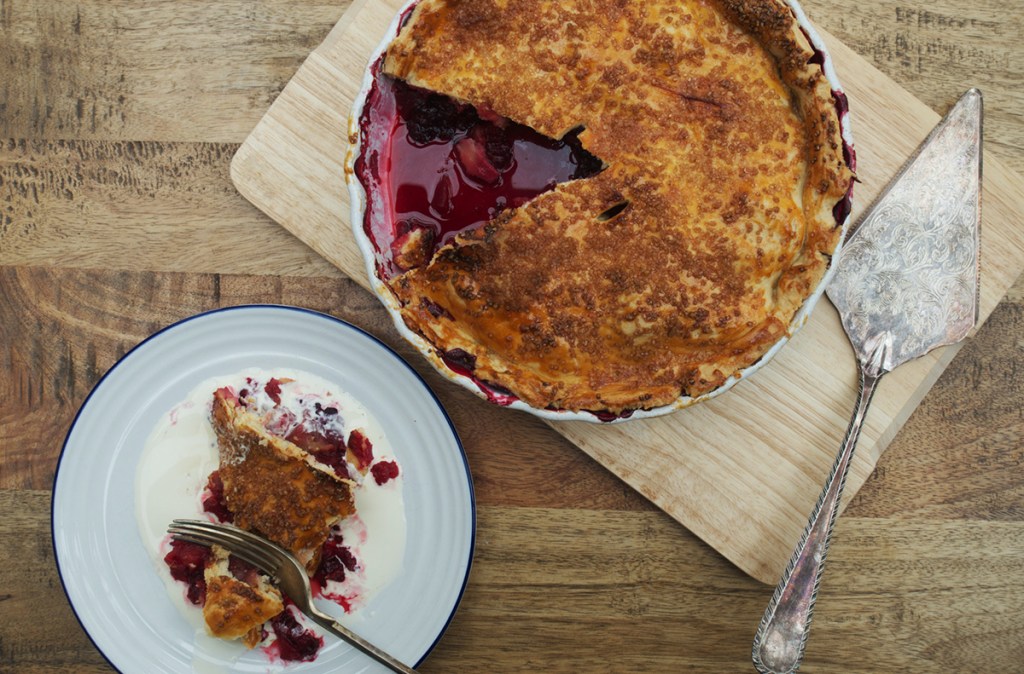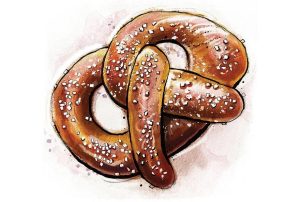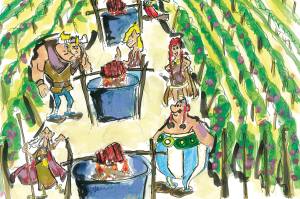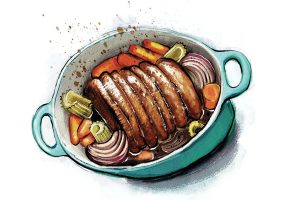There are some fruits which, while lovely cooked, are probably at their best fresh: nectarines and peaches, raspberries, mango. But blackberries, as delightful as they are eaten fresh from the bush mid-forage, come alive when cooked. As you heat blackberries, and they break down and give up their juices, begin to smell like violets and wine. They become more complex, perfumed; their sweet-sour flavor is softened into something more elegant, even more irresistible than when fresh.
Normally in a pie, those beautiful juices are a cause for concern. They’re a one-way ticket to a soggy bottom, something we try to avoid with careful blind-baking, or pre-cooking, or layering the base with something like ground almonds to soak up any liquid. Competitors on The Great British Baking Show gaze into ovens fearing soggy bottoms and muttering incantations against such a dismal fate. I have spent more time than I can count making enriched, delicate pastries, carefully lining tins, chilling and trimming edges, worrying about cracks or weaknesses, spills and leaks. No longer. This is a simpler solution: forget the bottom layer of pastry entirely, stop worrying about juices coming out and embrace them.
A ‘plate pie’ is one made on a pie plate (as opposed to, say, in a tart tin with a removable bottom), and often just has a top layer of pastry, rather than a bottom and a top. It’s not the kind of pie you turn out; it should be served from the tin — I suppose it’s a little like a crumble with a pastry topping. It is made for punchy, bold fruits that will give up lots of juice on cooking. It’s not a fancy pudding, but it is one of the most delicious ways of using up the season’s fruits, and one that makes a feature rather than a fear of those wonderful juices.
This isn’t a precise pie: it will accommodate most pie dishes and most appetites. The amount of fruit is not critical. It is designed to be a pudding that removes rather than increases stress, that uses up fruit as it comes into its season and doesn’t curb their juicy nature. Sometimes, as the pie cooks, those juices will burst through like a hot, sweet geyser, staining the pastry and caramelizing on top, but I rather like that.
The pastry is a very straight-forward one: a simple shortcrust made up of two parts flour to one part butter, with just a splash of water to bring the whole thing together. The body of the pastry is unsweetened, but then once it sits on top of the fruit, it is generously scattered with coarse demerara sugar.
The pie is best served with a big spoon rather than a cake knife or similar, lifting up and containing all the soft fruits and their syrupy juices. This pie is great with ice cream, but personally I think those scarlet juices mixing with double cream is one of the prettiest kitchen table sights.
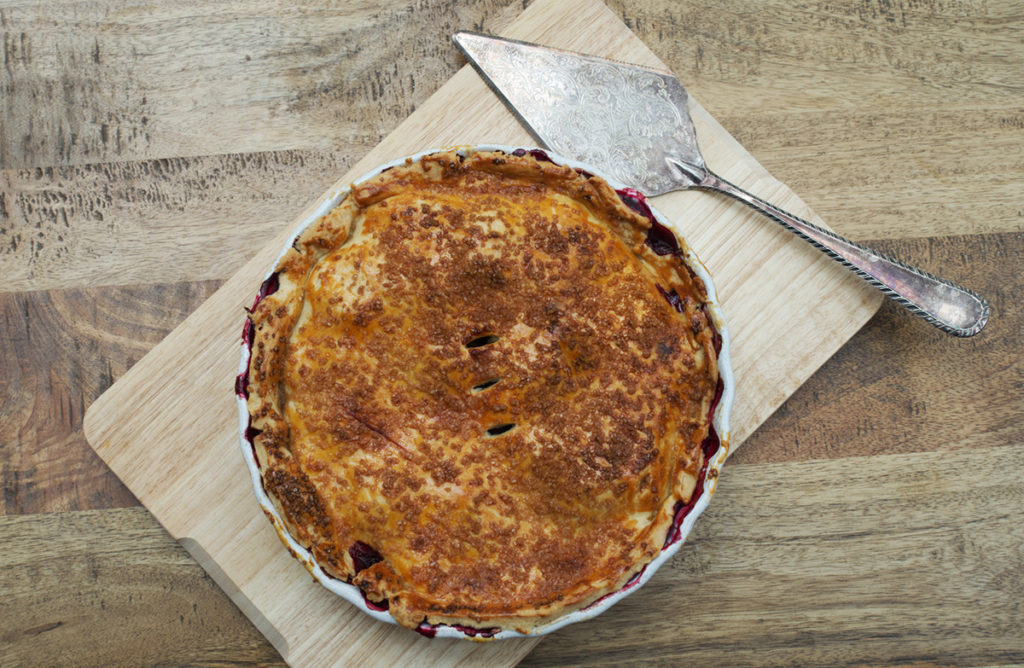
Apple and blackberry pie
Makes: Enough for six
Takes: 30 minutes, including chilling
Bakes: 40 minutes
3 large Bramley apples, peeled, cored and cut into chunks
17½ oz blackberries
2 tablespoons caster sugar
9 oz plain flour
4½ oz butter, cold, diced
½ teaspoon fine salt
- First, make the pastry. In a large mixing bowl, rub the butter into the plain flour and salt until they resemble breadcrumbs. Add a tablespoon of cold water and bring the dough together — if it’s still very crumbly and won’t come together, add another tablespoon of water. Wrap in clingfilm and refrigerate for half an hour
- Preheat the oven to 390°F. Place the apple chunks and blackberries into a deep pie dish, plate or skillet pan in an even layer and sprinkle with the caster sugar
- Roll out the chilled pastry into a large circle about an eighth of an inch thick and lay over the top of the fruit, so that it overhangs the edge of the pan. Press the pastry down at the edge of the pan so that it is tucked over the fruit, then crimp the edges to form a crust. Brush the crust with a little water and then sprinkle the demerara all over the pastry. Make three knife slits into the center of the pie to allow steam to release
- Bake the pie for 40 minutes until the pastry is golden and crisp. Leave to cool for 10 minutes before serving with pouring cream
This article was originally published on Spectator Life.
